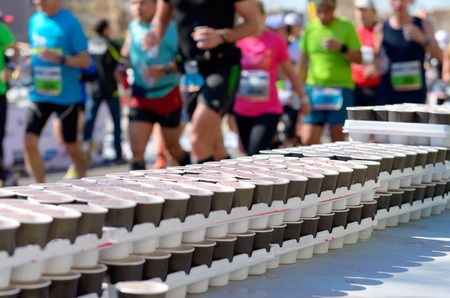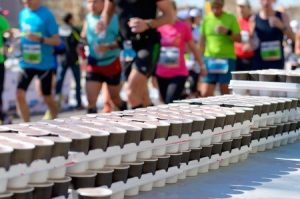
It’s that time of year again. Temperatures are on the rise, and there’s the mad rush to get that summer-body ready for the change of season. Exercise becomes more vigorous and clients more earnest. And with all that comes talk and warnings of staying properly hydrated during activity. Rightfully so! But as we all know, it’s easy to slip into a mindset of more being better, as in, if running five miles is good, seven is great! It’s a natural assumption, it makes a bit of sense, and it stems from simply wanting to work harder to improve and increase results.
So it stands to reason that the same more-is-better mindset can prevail when it comes to hydration. However, sometimes more can actually become life-threatening. Over-hydration can be just as dangerous as dehydration and can lead to hyponatremia, or a dangerously low blood sodium level. Symptoms include headache, nausea, and seizures. Acute hyponatremia comes with direr consequences including brain disease, cardiac arrest, coma, and death. A lot of us already know this. A lot of us would be surprised by how many fitness beginners do not.
I’ll go ahead and confess that I first heard the word hyponatremia while already in training for my fist half-marathon and actively trying to increase my fluid intake. The thought of being able to overdo it had never crossed my mind. I’ve since had friends tell me their stories of close calls, feeling unwell or getting desperately ill after drinking too much water post-run.
 So, how do we know exactly how to properly hydrate? There is the “drink to thirst” idea, which is subjective. There is the “drink before you’re thirsty” idea which could, by theory alone, lead to drinking too much. There is the “drink to sweat output” which is tough to gauge, and could actually lead to not hydrating enough in cooler weather. What to do?!
So, how do we know exactly how to properly hydrate? There is the “drink to thirst” idea, which is subjective. There is the “drink before you’re thirsty” idea which could, by theory alone, lead to drinking too much. There is the “drink to sweat output” which is tough to gauge, and could actually lead to not hydrating enough in cooler weather. What to do?!
With so many different schools of thought on proper hydration, it can be tricky to tell people how to hydrate. The important thing is to make people aware that there is such a thing as hyponatremia, and while few cases lead to death, many are affected by lesser symptoms per year. Instead of a hard-and-fast rule to follow, here are three things to know and make known about hyponatremia.
- Although dehydration is by far the most common hydration problem, participants of intense physical activities such as marathons, ultras, and triathlons are at an increased risk for hyponatremia. For endurance training and for event day, alternate sports drinks, which contain electrolytes, with water. Also light, salty snacks such as pretzels or trail mix can help with sodium balance.
- Some medications like certain diuretics and depression meds can also increase someone’s chances for hyponatremia. It’s important for clients to understand the side effects of medications and if there is any effect on blood sodium.
- Remember that individual hydration needs vary greatly, and while a client will need to consult a registered dietitian for an individualized plan, it’s important they at least know of hyponatremia’s existence and the warning signs.






